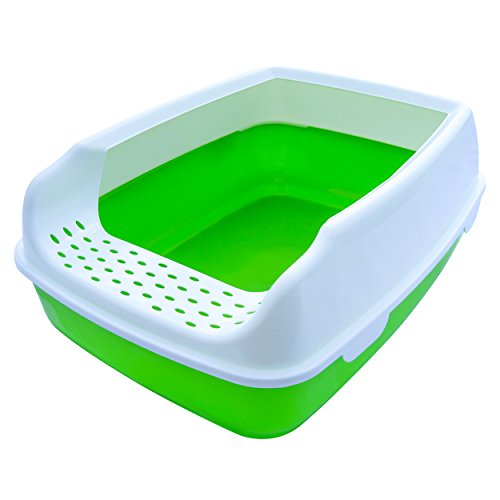
Hydrocephalus is the abnormal dilation, or expansion, of the ventricular system due to an increased volume of spinal fluid. In this case, the ventricles that are connected with the spinal cord are the ventricles that are being affected. The abnormal dilation may affect only one side of the brain, or both sides. It may involve the entire ventricular system (a set of hollow structures in the brain continuous with the central canal of the spinal cord), or only elements next to a site of ventricular system obstruction.
There are two types of hydrocephalus – compensatory and obstructive. Both compensatory and obstructive hydrocephalus can be congenital (present at birth) or acquired. With compensatory hydrocephalus, spinal fluid fills the space where the nervous system’s functional parts have been destroyed and/or failed to develop. Intracranial (within the brain) pressure is a normal result. This is ventricular dilation incidental to the primary disease.
In the case of obstructive hydrocephalus, spinal fluid accumulates due to an obstruction along the normal circulatory pattern (noncommunicating hydrocephalus), or the fluid accumulates at the fluid resorption site near the meningeal arachnoid villi (communicating hydrocephalus). The meninges are composed of three membranous envelopes – the pia mater, which lies against the brain; the arachnoid, the middle layer; and the dura mater, the outer, thicker layer closest tot he skull – that surround the brain and spinal cord. Intracranial (within the skull) pressure may be high or normal. However, clinical signs may be noted when intracranial pressure is normal.
Congenital obstruction causes primary obstructive hydrocephalus. The most common site of obstruction is at the level of the mesencephalic (middle brain) aqueduct. Prenatal (before birth) infections may cause aqueductal stenosis (narrowing) with subsequent hydrocephalus. This may result in considerable disruption of the architecture of the brain.
Acquired obstruction results in secondary obstructive hydrocephalus. It is caused by tumors, abscesses, and inflammatory diseases (including inflammation resulting from hemorrhage that has been caused by traumatic injuries or other causes of bleeding). The sites of obstruction include the interventricular foramina (channels that connect the paired lateral ventricles with the third ventricle at the midline of the brain), the mesencephalic aqueduct, or the lateral apertures of the fourth ventricle.
Overproduction of spinal fluid can also cause hydrocephalus. However, this is rare. It may also be caused by a tumor in the eye.
The congenital form is an inherited disease in Siamese cats. Acquired hydrocephalus can occur in all breeds. Congenital hydrocephalus usually becomes apparent within a few week of birth, and up to a year of age. Acute onset of signs can occur with previously undiagnosed congenital hydrocephalus. The exact cause of this uncertain. Acquired hydrocephalus can occur at any age.
You will need to provide your veterinarian with a thorough and detailed history of your cat's health, including any information you have about its birth and parentage, the onset of symptoms, and any possible incidents, including minor falls, that might have preceded this condition. Your veterinarian will perform a complete physical exam on your cat, with a complete blood profile, chemical blood profile, complete blood count, an electrolyte panel, and a urinalysis, in order to effectively rule out or confirm evidence of trauma, infection, or cancer.
Diagnostic imaging is essential. Skull radiographs may help to diagnose congenital hydrocephalus, but computed tomography (CT) and magnetic resonance imaging (MRI) are best for visualization, enabling your veterinarian to come to a definitive diagnosis.
Other diagnostic tests that can assist in the diagnosis of hydrocephalus are a spinal tap, with a laboratory analysis of the fluid, and an electroencephalogram (EEG) for measuring the brain’s electrical activity.
Your cat will require hospitalization if it is exhibiting severe signs or requires surgery. Those with less severe symptoms may be treated medically on an outpatient basis. Hospitalized patients need to be turned regularly to prevent pressure sores, provided with eye lubricant to protect the eyes from drying out, and properly positioned to prevent aspiration pneumonia.
Your veterinarian will schedule follow-up appointments with you depending on the severity of your cat's condition after hospitalization. How well your cat recovers will depend on the cause and severity of the illness. If your cat has a mild congenital form of hydrocephalus, there is a good prognosis and it may require only occasional medical treatment to keep it under control.
 Involuntary Muscle Trembling in Cats
Tremors in Cats
Tremors are involuntary, repetiti
Involuntary Muscle Trembling in Cats
Tremors in Cats
Tremors are involuntary, repetiti
 Understanding Cat Behaviour
Whether a cat comes to the h
Understanding Cat Behaviour
Whether a cat comes to the h
 What Cats Are Good With Kids & Shed the Least?
What Cats Are Good With Kids & Shed the Le
What Cats Are Good With Kids & Shed the Least?
What Cats Are Good With Kids & Shed the Le
 Low Platelet Count in Cats
Thrombocytopenia in Cats
An abnormally low produc
Low Platelet Count in Cats
Thrombocytopenia in Cats
An abnormally low produc
 Vomiting, Chronic in Cats
Vomiting is characterized by the contents of the
Vomiting, Chronic in Cats
Vomiting is characterized by the contents of the
Copyright © 2005-2016 Pet Information All Rights Reserved
Contact us: www162date@outlook.com